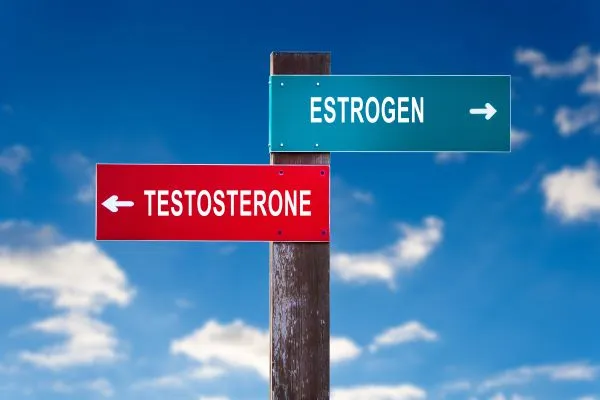Hint: Remember to add your supply codes.
When your urologist carries out the in-office insertion of estradiol or testosterone pellets, it’s crucial to incorporate the corresponding drug code with the procedure code in your claim. Additionally, you will need to verify that the diagnosis code justifies the medical necessity for the implantation code.
Consider the following useful tips to help you submit accurate claims for testosterone and estradiol pellet insertion procedures in your urology practice.
Tip 1: Code 11980 for Pellet Insertion
Pellets of estradiol, which may or may not be combined with testosterone, can be used to manage symptoms of menopause in women. In young males, testosterone pellets can be inserted to treat growth delays, while they are used for addressing low testosterone levels, age-related changes, and decreased libido in older males.
When your urologist implants testosterone or estradiol pellets, they will make a subcutaneous incision with a trocar needle. The urologist will then use forceps to create a space and will then push the hormone pellets inside these spaces. Concentrated pellet forms of hormones such as estradiol and testosterone are released over time, which allows for controlled dose delivery.
You should report code 11980 (Subcutaneous hormone pellet implantation (implantation of estradiol and/or testosterone pellets beneath the skin)) for a subcutaneous hormone pellet insertion procedure.

Tip 2: Add the Necessary Drug Supply Code
When you report hormone pellet implantation, remember to include the appropriate code for the drug supply on your claim.
Medicare: For Medicare, Medicare replacement plans, and some private plans, you should report HCPCs code J3490 (Unclassified drugs).
Note: HCPCS code J1071 (Injection, testosterone cypionate, 1 mg) is only used for the subcutaneous needle-injected, non-pelleted form of testosterone.
Private payers: For some private payers, you should report S0189 (Testosterone pellet, 75mg). Some private payers also limit the number of pellets for which they will pay, so check with your payer to ensure you only bill for the allowable number.
Your urologist will usually implant between six and 30 pellets per procedure; however, some Medicare contractors and private payers place limits on the number of pellets they allow for reimbursement. For example, “Palmetto GBA, a Medicare local contractor, state in their billing article (A58828) and LCD (L39086), only 150 to 450 mg (roughly 2 to 6 pellets) is covered every 3 to 6 months,” says John Piaskowski, CPC-I, CPMA, CUC, CRC, CGSC, CGIC, CCC, CIRCC, CCVTC, COSC, specialty medicine auditor at Capital Health in Trenton, New Jersey, and AAPC consultant and committee chair (https://www.palmettogba.com/palmetto/jjb.nsf/DID/DAGY34987D). “Wastage is not covered as Medicare will only cover the number of pellets actually implanted in the patient, but you may be able to get paid for additional pellets on appeal if your documentation supports medical necessity determined by the Food and Drug Administration (FDA) drug level and if the service meets Medicare’s requirements,” he adds.
In cases where your urologist inserts more than six pellets, it’s essential to clarify to your insurance provider the desired testosterone blood levels and the number of pellets required to attain that level.
Take note: Certain payers may have different policies for pellet insertion, so you should always check with your particular payer.
For example, Aetna considers implantable estradiol pellets “experimental and investigational because they have been shown to produce unpredictable and fluctuating serum concentrations of estrogen.” According to Piaskowski, “other payers, like United Healthcare, consider testosterone pellets to be medically necessary for replacement therapy in conditions with a deficiency or absence of endogenous testosterone, including primary hypogonadism or hypogonadotropic hypogonadism.” See https://www.uhcprovider.com/content/dam/provider/docs/public/policies/comm-medical-drug/testosterone-replacement-supp-therapy.pdf for more information.
On the other hand, Aetna considers implantable testosterone propionate implant pellets medically necessary for certain conditions, including delayed male puberty and gender dysphoria in a patient who can make an informed decision to engage in hormone therapy.
Additionally, the start or continuation of therapy for primary, or hypogonadotropic hypogonadism are covered when the patient has at least two confirmed low morning testosterone levels according to current practice guidelines or standard lab reference values before beginning therapy.
In its pellet insertion policy, Aetna considers implantable testosterone pellets experimental and investigational for the following (their effectiveness for indications other than the ones listed above has not been established):
Note that this is not an all-inclusive list. Read more about Aetna’s pellet insertion policy here: http://www.aetna.com/cpb/medical/data/300_399/0345.html.

Tip 3: Choose Appropriate ICD-10 Code
While documenting the insertion of estradiol/testosterone pellets, it’s also crucial to incorporate the appropriate ICD-10 code in your claim, such as:
Remember: Different payers may have supporting ICD-10 codes they will accept, so you should always double-check with them before submitting your claim.
Tip 4: Report any Additional Procedures
In some cases, your urologist may place sutures at the implantation site for patients with bleeding tendencies or for patients who are on warfarin or low-dose aspirin therapy. However, you might not be able to report those services with code 12001 (Simple repair of superficial wounds of scalp, neck, axillae, external genitalia, trunk and/or extremities (including hands and feet); 2.5 cm or less) in conjunction with a hormone pellet insertion procedure coded to 11980.
Here’s why: A procedure-to-procedure (PTP) National Correct Coding Initiative (NCCI) edit exists between 12001 and 11980. Code 12001 is a Column 2 code for 11980, meaning those two codes are bundled. However, you can use an NCCI-associated modifier to override this edit under the appropriate circumstances. “Per the NCCI manual, closure of the incision made in the process of the implantation is a component of the service and the expectation is that the provider will close the wound created. This is not separately payable,” says Piaskowski. “However, if there is a wound elsewhere from the surgical field, and is unrelated to the pellet implantation, it might warrant adding modifier 59 [Distinct procedural service] to your claim.”
